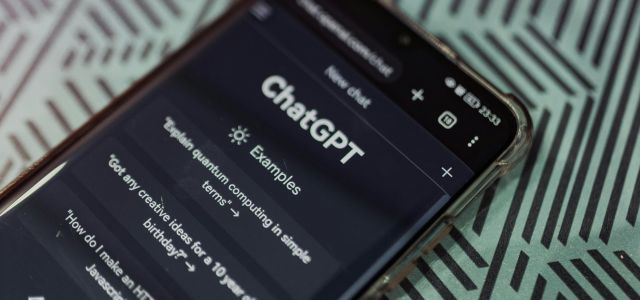The USPTO recognizes that practitioners are increasingly using AI tools to prepare and prosecute patent and trademark applications. Therefore, to “cabin the risks” arising from the use of AI, on April 11, 2024, the USPTO issued guidance on the use of AI tools. Overall, while the USPTO has determined that its “existing rules protect the USPTO’s ecosystem” against the “potential perils” of misusing AI tools, the guidance “address[es] the legal and ethical considerations” that arise from the use of AI in practice before the Office.
Using generative AI tools to prepare submissions to the USPTO
There is no prohibition on using generative AI tools to prepare submissions (e.g., patent or trademark applications or correspondence with examiners). However, each practitioner has a duty of candor and good faith in dealing with the Office. The guidance therefore reminds practitioners that “all statements to the party’s own knowledge are true and that the party performed an inquiry reasonable under the circumstances.” Due to concerns that AI tools may “omit, misstate, or even ‘hallucinate’” information, the practitioner “must ensure that all statements in the paper are true to their own knowledge and made based on information that is believed to be true.” The guidance imposes an obligation on the practitioner to “perform an inquiry reasonable under the circumstances” to confirm that all facts in a paper have evidentiary support and that “all citations to case law and other references” are accurate. In other words, a practitioner may not simply rely on the accuracy of an AI tool when preparing a submission to the USPTO.
Duty of disclosure to USPTO
Patent applicants have a duty to disclose to the USPTO all information known to be material to the patentability of an invention. So while there is no requirement to notify the Office that an AI tool was used “in the invention-creation process or practicing before the USPTO,” all applicants and practitioners should be mindful of their duty of disclosure. If the use of an AI tool is material to patentability, the use “must be disclosed.” This disclosure may be material to whether a human inventor made a “significant contribution” to a claimed invention.
Practitioners also have “a duty to refrain from filing or prosecuting patent claims that are known to be unpatentable.” If an AI tool is used to draft patent claims or patent specifications, the practitioner is under a “duty to modify” the generated materials as needed to ensure their accuracy before submitting the materials to the USPTO. The practitioner should also assess whether the contributions made by a natural person rise to the level of inventorship.
Filing documents with the USPTO
The guidance emphasizes that practitioners must carefully review all submissions to “ensure that the facts and statements provided are true and have evidentiary support.” This duty applies to all patent and trademark applications, PTAB and TTAB proceedings, and legal arguments and citations presented to the Office. For example, practitioners are cautioned to “avoid submitting any AI-generated specimens, which do not show actual use of the trademark in commerce, or any other evidence created by AI that does not actually exist in the marketplace.”
Accessing USPTO IT systems
AI tools may access and interact with USPTO IT systems, but practitioners are cautioned that AI tools must not run “afoul of federal and state law, and USPTO regulations and policies.” Only authorized, registered users may file papers with the USPTO. In addition, the guidance cautions against using AI tools to data-mine USPTO records that result in an “unusually high numbers of database accesses.”
Confidentiality and national security considerations
Using AI tools before the Office may result in the disclosure of client-sensitive or confidential information, including highly sensitive technical information, to third parties. Certain AI tools may use servers located outside the United States. Therefore, the guidance stresses that “it is imperative for practitioners to understand an AI tool’s terms of use, privacy policies, and cybersecurity practices.”
Fraud and intentional misconduct
The guidance emphasizes that “[t]he USPTO does not tolerate fraud or intentional misconduct in any manner in a proceeding before the Office or in connection with accessing USPTO IT systems.” The USPTO monitors its network traffic to identify any fraudulent or unapproved access by AI tools, and violators may be subject to criminal, civil, or administrative actions and penalties.
Takeaways
There is no prohibition to using AI tools in practice before the Office. Practitioners using such AI tools, however, should take care to ensure compliance with USPTO rules of practice, including the duty of candor and good faith, and the duty of disclosure. While practitioners may use AI tools to prepare and prosecute patent and trademark applications, practitioners must ensure that all statements of fact, evidence, and legal citations from the AI tools are accurate in their submissions to the agency.
Please note: This article reflects only the present personal considerations, opinions, and/or views of the authors, which should not be attributed to any of the authors’ current or prior law firm(s) or former or present clients.

Written by David McCombs
Partner, Haynes and Boone LLP

Written by Jonathan Bowser
Partner, Haynes and Boone LLP

Written by Eugene Goryunov
Partner, Haynes and Boone LLP
The Patent Lawyer Editorial Board Member
You may also like…
Clarivate announces the development of IPfolio Law
Clarivate, a leading global provider of transformative intelligence, today announced the development of IPfolio Law,...
Panasonic Automotive Systems joins Open Invention Network to bolster open-source software development
Panasonic Automotive Systems (PAS) is a leading global provider of advanced technologies, such as infotainment...
Anaqua unveils AI-powered management solutions
Organizations often begin their intellectual property (IP) journey by examining AI-enhanced point solutions. While...
Contact us to write for out Newsletter














